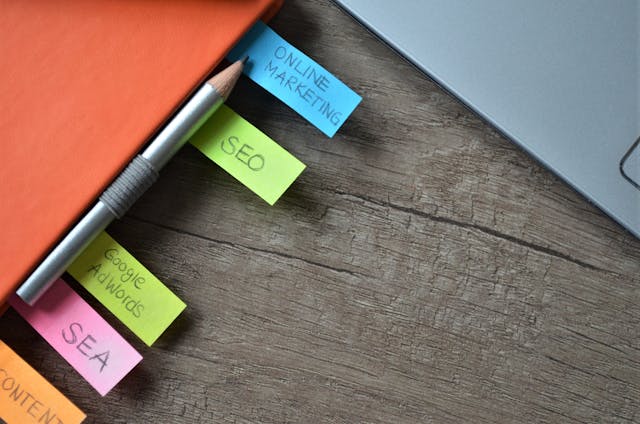Write Us: hello@ali5.org
AI Overviews Dominance & Zero-Click Search Evolution: Surviving the Clickless Future
Master the zero-click search era! Learn how AI Overviews reshape SEO, slash click-through rates, and demand new strategies for visibility. Actionable adaptation framework included.

The Quiet Revolution Changing Search
Picture this: you type a question into Google and get the perfect answer right away, without having to click on anything or go to a website. This is zero-click search, and it’s not just a theory anymore. The old SEO playbook is falling apart 810. 60% of searches now end without clicks (75%+ on mobile), and AI Overviews make up 30% of all informational queries. Google’s AI-generated summaries take up to 50% of the screen space, pushing organic results below the fold and cutting click-through rates (CTR) by 34.5% for pages that are affected.
This means that publishers need to make content that helps Google without bringing in visitors. It gives users answers right away. For SEOs? It needs a big change in strategy, or it will become irrelevant.
Phase 1: The Zero-Click World in 2025
Why Clicks Are Going Away
- AI Overviews (AIO): Combine answers from different places so you don’t have to go to as many websites. When people use AIO, 83% of their queries don’t get any clicks, compared to 60% without 10.
- Voice Search Growth: 70% of voice queries use featured snippets or AI summaries that don’t require any clicks 8.
- Local packs, knowledge panels, and image carousels all help people find answers on the same page. For example, “grams to pounds” has a 100% zero-click rate.
- The AI Overview Effect: 89% of mobile SERPs have organic results below the fold because of larger AIO panels.
- Problems with citations: Sources are often hidden, wrongly credited, or left out. For example, Google summarized Litmus’s email marketing content without linking to it. 7.
- Traffic Decoupling: Sites like Databox say that even though impressions are going up, organic traffic is going down by 40–60%. 7.
Key Insight: “SEO is no longer about getting clicks; it’s about getting citations in Google’s answer ecosystem.”
Phase 2: How AI Overviews Work and Why They Work
Google’s AI Overviews use Gemini AI to look through more than 100 sources for each query and turn the answers into short, conversational summaries. AIO mixes information, which makes it hard to tell where it came from, unlike featured snippets, which only cite one source.
Important Mechanics:
- Query Interpretation: It uses semantic search to match intent, not just keywords.
- Source Aggregation: Gathers information from structured data, high-E-E-A-T sites, and forums like Reddit.
- Recursive Loops: 45% of AI Overviews link to other Google sites, like Maps and Flights, which keeps users in its ecosystem 7.
The Crisis of Trust
Even though Google puts a lot of emphasis on E-E-A-T, AI Overviews often make up things:
- A sarcastic comment on Reddit suggested “adding glue to pizza” 12.
- Suggested “eating small rocks” as a source of nutrients 12. Solution: Google now lowers AIO triggers for questionable queries, but mistakes still happen.
Phase 3: What it means for publishers and marketers
- The Harsh Truth: Metric Before AIO After AIO CTR for #1 Organic Result 28%15%
- Traffic from informational queries is stable, down 34.5%.
- Branded Search Clicks: High and Unchanged710 People Who Lost:
- Small Sites: Don’t have the authority to get citations.
- YMYL (Your Money Your Life) Sites: Health and finance content needs perfect E-E-A-T to keep AIO from spreading false information 12.
- Content Farms: It’s easy to summarize and throw away generic advice.
Winners:
- Local Businesses: Local packs make calls and give directions without needing to click.
- Data-Rich Sites: Original studies get cited (for example, Ahrefs’ zero-click research) 7.
- Brands with SERP Real Estate: Featured snippets still get an 8% CTR when AIO is not present 7.
Phase 4: How to Change Your Plans for the Clickless Era
1. Focus on citations, not rankings
Use FAQPage, HowTo, and Dataset schema to feed AIO 10 with Schema Markup.
In short Summaries: Put short answers in the first 100 words, like “TL;DR: Zero-click searches need E-E-A-T and structured data.” 12.
Entity Optimization: Use tools like Ahrefs’ AI Content Helper to find holes in AIO knowledge graphs 7.
2. Focus more on E-E-A-T
Google’s AI puts a lot of weight on proven expertise:
- Author Credentials: Include schema-verified bios, like “credential”: “PhD, Nutrition Science” 12.
- Proprietary Data: Put out original research, like “2025 SaaS Pricing Study: Data from 1,200 Companies.” 6.
- Correction Logs: Update old claims in public to gain trust 12.
3. Make “Unsummarizable” Content AI has trouble with:
- Nuanced Opinion Pieces: Thought leaders who challenge the status quo.
- Calculators, quizzes, or configurators are examples of interactive tools.
- Visual Narratives: Videos and infographics that explain hard ideas 79.
4. Focus on channels other than Google. For Answer Engines, make sure your conversational Q&A content works well with Perplexity/ChatGPT.
- Community Platforms: Get involved in Reddit, Quora, and niche forums where people look for real experiences.
- Voice Search: Make sure your content is set up so that Alexa and Google Nest can respond to it (for example, “Best running shoes for flat feet” instead of “running shoes”). 6.
5. Keep track of who owns the SERP
To do the following, use Similarweb or Semrush:
- Find the keywords that start AIO.
- Keep an eye on how often citations show up.
- Check for “missing” chances, like URLs that are in AIO but not on your site.
The Future: Where Search Is Going Predictions for 2025–2026
- AI Mode Is Now the Default Google’s chat-based interface will take the place of regular SERPs, making zero-click the norm.
- Visual/Video Search Growth: AI will look through images and videos for answers, which means that multimedia optimization 9 will be needed.
- Pay-to-Cite Models: Google might offer brands premium citation slots, just like ads do.
The Truths That Last
Even though things are crazy, these rules still apply:
- Content Depth > Breadth: Full guides still get backlinks and searches for their brand.
- User Intent Rules: Make sure the query’s purpose is the same (informational, commercial, or transactional).
- Technical Health Issues: AI can’t cite what it can’t crawl—fix it 9 Core Web Vitals
- “In a world with no clicks, being the answer is worth more than ranking for it.”
Your 5-Step Action Plan:
- Use Google Search Console to find queries that are affected by AIO and see if traffic drops.
- Add FAQ schema to ten important pages to improve.
- Use Semrush to do a “SERP Feature Gap Analysis” to find AIO opportunities that you missed.
- Publish one “unsummarizable” asset, like an interactive tool, for Create.
- Diversify: Spend 30% of your SEO resources on channels other than Google, like Reddit, email, and webinars.







